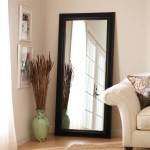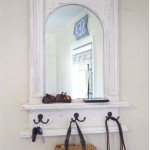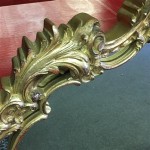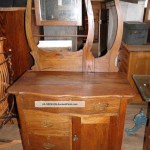Vintage Faux Bamboo Mirror: A Reflection of Style and History
Vintage faux bamboo mirrors represent a fascinating intersection of design history, material innovation, and enduring aesthetic appeal. These decorative objects, popularized in various periods, offer a glimpse into the evolving tastes and manufacturing techniques of their time.
The allure of bamboo in furniture and décor has existed for centuries. Its natural lightness, strength, and exotic appearance made it a desirable material, particularly in Asian-inspired design. However, the challenges of working with real bamboo, including its susceptibility to splitting and insect damage, led to the development of faux bamboo techniques. These methods allowed artisans and manufacturers to mimic the look of bamboo using more readily available and easily manipulated materials.
One of the most common materials used in creating vintage faux bamboo mirrors is wood. Craftspeople would carve and shape pieces of wood, often pine or poplar, to resemble bamboo stalks, nodes, and leaves. This intricate process required skill and precision to achieve a convincing imitation. The wood would then be painted or stained to enhance the bamboo-like appearance, often in shades of yellow, green, or black.
Another popular material employed in faux bamboo creation is plaster. This versatile material could be molded and shaped with relative ease, making it a cost-effective alternative to carved wood. Plaster faux bamboo mirrors often feature intricate details and elaborate designs, showcasing the material's ability to capture fine textures and patterns. Similar to wood, plaster faux bamboo would be painted to complete the illusion.
The earliest examples of faux bamboo furniture and décor can be traced back to 18th-century Europe, where the Chinoiserie style was in vogue. This aesthetic movement embraced Asian-inspired motifs and designs, including the use of bamboo. As genuine bamboo was scarce and expensive in Europe, artisans developed faux bamboo techniques to satisfy the demand for this exotic look.
The popularity of faux bamboo experienced a resurgence in the mid-20th century, particularly during the Hollywood Regency and Tropical Regency periods. These design styles, characterized by glamour, exoticism, and a touch of whimsy, embraced the use of faux bamboo in mirrors, furniture, and decorative accessories. Vintage faux bamboo mirrors from this era often feature elaborate frames with intricate carvings, gilded accents, and vibrant colors.
Identifying a genuine vintage faux bamboo mirror involves careful examination of several factors. Firstly, the material is a key indicator. Look for signs of wood grain beneath the paint or the characteristic texture of plaster. Secondly, the construction techniques provide clues. Hand-carved wooden faux bamboo will typically exhibit slight variations and imperfections, while plaster pieces often have mold seams or casting marks.
The style and design of the mirror frame can also offer insights into its age. Simpler, less ornate frames might suggest an earlier period, while more elaborate and stylized frames are often associated with mid-20th century design trends. Examining the hardware, such as the hanging mechanism and any decorative elements, can also provide further clues.
Caring for a vintage faux bamboo mirror requires attention to its specific material. Wooden faux bamboo should be dusted regularly and cleaned with a slightly damp cloth. Avoid harsh chemicals or abrasive cleaners, which can damage the finish. Plaster faux bamboo requires even more gentle care, as it is more susceptible to chipping and cracking. Dusting with a soft brush is recommended.
The value of a vintage faux bamboo mirror depends on various factors, including its age, condition, material, and craftsmanship. Rare and well-preserved examples from prominent designers or manufacturers can command higher prices. The intricacy of the design and the overall aesthetic appeal also contribute to its value.
Vintage faux bamboo mirrors offer a unique blend of historical charm and decorative appeal. They serve as a testament to the enduring fascination with bamboo and the ingenuity of artisans who sought to replicate its beauty using readily available materials. These mirrors continue to be sought-after by collectors and design enthusiasts alike, adding a touch of timeless elegance to contemporary interiors.
Beyond their decorative function, these mirrors offer a tangible link to past design trends and manufacturing techniques. They embody the creativity and resourcefulness of artisans who embraced imitation as a form of art. The continued popularity of vintage faux bamboo mirrors reflects their enduring appeal and their ability to transcend fleeting trends.

Vintage Faux Bamboo Frame Mirror Gold With Broe Accent Singapore
Mirrors Vintage Gilt Wood Faux Bamboo Mirror Wth Pediment Empel Collections
Mirrors Vintage Faux Bamboo Mirror Empel Collections

Large Vintage Wooden Faux Bamboo Mirror Chairish

French Vintage Faux Bamboo Mirror Scout House

Antique French Faux Bamboo Mirror With Original Glass Ruby Lane

French Faux Bamboo Mirror Large Love After

Large French Faux Bamboo Mirror 1890s For At Pamono

1930s French Faux Bamboo Mirror Chairish

Large Gold Bamboo Mirror Palm Beach Decor Gilt Singapore








